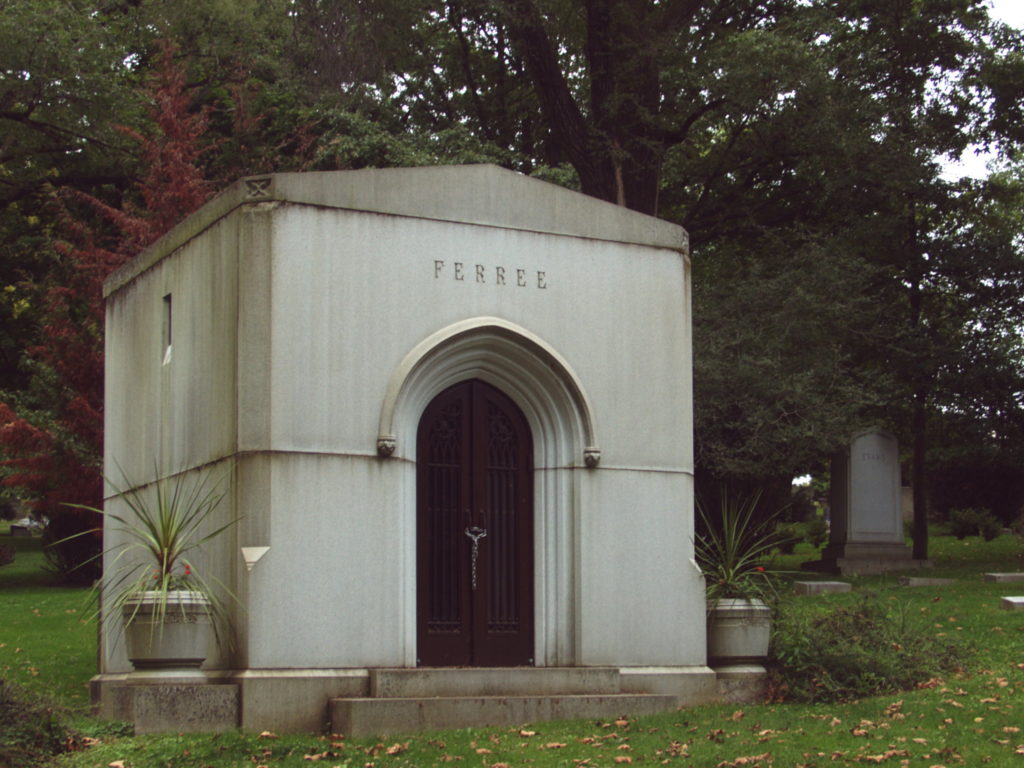
An Art Deco interpretation of Gothic, with a very streamlined version of the requisite pointed arch. The cemetery’s on-line records do not list a Ferree as buried in a private mausoleum; the only Ferree listed is a Dr. David Ferree buried in 1917 in a grave in a completely different part of the cemetery. Father Pitt is therefore forced to guess the date by the style, so he will guess 1930s.






